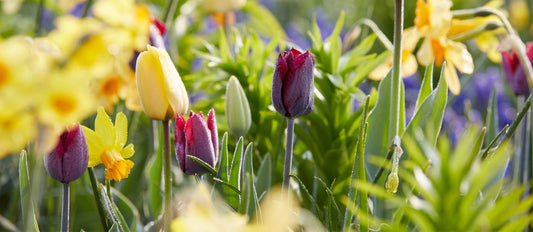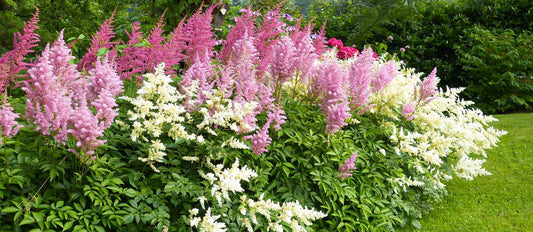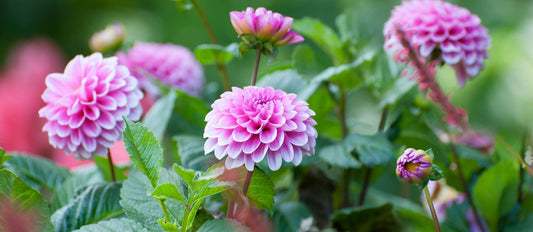Narcissi will fill your garden or balcony with cheerful colour in spring. These well-known yellow trumpets are springtime-flowering bulbs, This means that you plant them in the autumn so that they can light up your garden in spring. You can spot narcissi by the two circles each having three petals and the unmissable crown in the centre. Would you choose the original, yellow narcissus or would you prefer a different colour? They now come in red, pink and orange as well. Choose your favourite!
Well-known varieties
There are around 85 different varieties and as many as 18,000 cultivars. Not all cultivars have been bred for the garden. You can still find many varieties that only grow in the wild in Europe. Everyone is sure to be familiar with these magnificent varieties of narcissus:
The trumpet daffodil (Narcissus pseudonarcissus) is a popular favourite that is well-known for its extra-large crown that resembles a trumpet. Everyone is familiar with the yellow version of the trumpet daffodil. But did you know that they can also be bi-coloured, and even red or pink? You can enjoy these flowers from March to May. Make sure that you plant lots of them together, as each stem only carries one flower.
Compared to the trumpet daffodil, the large-cupped daffodil has a slightly wider crown. Each stem carries two magnificent flowers, although they have a shorter flowering period, from April to May. Place them in a partially shaded spot. This variety does not like the hot midday sun.
In contrast to the large-crowned daffodil, the small-crowned variety has very short, small crowns. The diverse colours of the petals will add a real wow effect to your garden. Another advantage is that you will get plenty of enjoyment from them as they flower from March to May.
Narcis têtê-à-têtê is a slightly smaller variety with short stems. Their bright yellow colour is like sunshine in any garden. Plant lots together in a flower pot. They'll reward you in spring with their radiance.
Planting narcissi
Just like all springtime-flowering bulbs, you plant narcissi in the autumn, usually between September and November. It is important that you plant the bulbs after the soil has cooled down, but before the first frosts. A temperature of 10°C is the perfect temperature for planting them. Narcissi like a sunny spot with soil that is well aerated and well drained. Ensure that there is good drainage and that water doesn't pool on or in the soil. Narcissi also thrive in partial shade. You can plant them, for example, between shrubs or in a decorative flower pot. The bulbs need fertile soil. So, mix your garden soil with potting soil or fertiliser to make it more nutritious. If you are planting the bulbs in a pot, use fresh potting soil for flower bulbs. It has the right structure and nutrition for bulbs. Your soil or flower pot is now ready for planting.
Follow these steps:
- Dig a hole that is as deep as three times the height of the bulb — This works out to between 15 and 20 cm, approximately. Are you planting lots of narcissi together? Read the planting distance on the packaging first. Usually the recommended distance is between 5 and 10 cm. This means that you can plant lots of lovely narcissi together.
- Fill the hole with the fresh potting soil.
- Water immediately and keep a close eye on the soil in the first few days. Make sure that it stays slightly moist so that the bulbs can root properly before winter comes, Make sure that there is no standing water in the open ground or in the pot.
With the exception of Narcissus tazetta, narcissi will tolerate frost well. In theory, you don't usually have to cover up the bulbs. But, if temperatures are extremely low (below -10), you will need to protect them with bubble wrap or bring flower pots indoors.
Caring for narcissi
Narcissi are perennial bulbs, so they return every year. Once the bulbs have flowered, leave them in the ground and look after the soil well. It is important that it is always slightly moist while the bulbs are in flower and for around three weeks afterwards. Once the flowers are spent, use organic and slow-acting fertiliser on the bulbs. This helps them develop new flowers for the following year. Remove the spent flowers and cut the stems back to just above the ground. Always use clean and sharp pruning tools to avoid pruning wounds. Don't remove the leaves. The bulb will create new flowers over the winter so you can enjoy them in the spring. If you want plenty of flowers, remove flower seeds in good time. This stops the bulb from using its energy to self-seed.
As well as spreading via seed, narcissi can also spread by producing bulblets. These new bulbs can be cut into pieces and replanted. The bulblets will then sprout and develop their own, new flowers.




